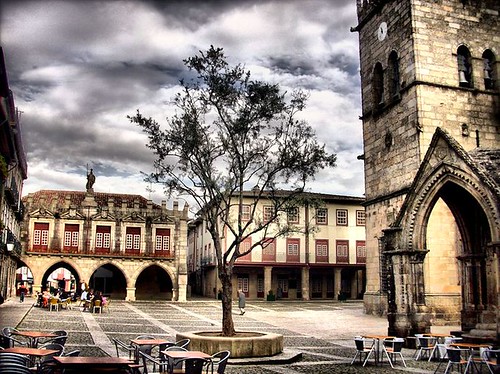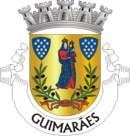quarta-feira, 17 de novembro de 2010
Montanha da Penha

The City of Guimarães sprang up in the valley at the foot of Mount Santa Catarina (Mount Penha), from the top of which it is possible to see the Atlantic.
Mount Penha a popular spot to visit in Guimarães; people are attracted both by the lure of nature and by the fun activities it offers. Amongst the possibilities to explore are monuments, grottoes, observation points overlooking a vast countryside, a campground, mini-golf, an Equestrian Centre, a tourist mini-train, picnic areas and hiking trails.
The Penha Sanctuary is a pilgrimage centre, and the faithful hear the call in large numbers in summer months.
One fun way to reach the top of Mount Penha is to take the Suspended Cable Car, a ride that affords a magnificent view of valley where Guimarães is located.
quarta-feira, 3 de novembro de 2010
Museum Martins Sarmento

Set in the Gothic cloister of S. Domingos Convent and in the attached rooms, this building has the signature of Marques da Silva architect, as well as one of the most important castro culture-related collections of the country, namely material that came from castro city Citânia de Briteiros (Caldas das Taipas), explored in the 19th century by Martins Sarmento. It assembles ethnographic and numismatic material. This museum organises temporary exhibits of ethnography and contemporary art.
Museum Alberto Sampaio
At the Museu de Alberto Sampaio everything combines to make the visitor wish to come back.
During the visit, without understanding why, emotion takes over. Is it the pieces or is it the space? Is it the pieces in that space? Certain is that the visitor feels serenity and is enchanted by the beauty of the whole. Some are enchanted by the masterpieces left by the master gold and silversmiths, others are touched by the serenity of Santa Maria de Guimarães or by the smile of Santa Maria “a Formosa”. And everyone is moved by the gambeson D. João I wore at the Battle of Aljubarrota and by the silver gilt triptych the same monarch offered to Santa Maria de Guimarães.
This is also the only national museum that opens its doors at night, in the months of July and August. Visiting this “museum at night” is an unforgettable experience. During this period of time, the visitor is always surprised by an exhibition of contemporary art.
This museum deserves, undoubtedly, “every visit, and the visitor vows to come back whenever he returns to Guimarães” (José Saramago).
segunda-feira, 9 de novembro de 2009
Historic Center
 The historic city of Guimarães is associated with the emergence of the Portuguese national identity in the twenty-first century. It is an exceptionally well preserved example of the evolution of a medieval town to a modern city with a rich typology would build to show the development of Portuguese architecture from the fifteenth century and with continued use of techniques and traditional building materials.
The historic city of Guimarães is associated with the emergence of the Portuguese national identity in the twenty-first century. It is an exceptionally well preserved example of the evolution of a medieval town to a modern city with a rich typology would build to show the development of Portuguese architecture from the fifteenth century and with continued use of techniques and traditional building materials.
Paço dos Duques
Paço dos Duques de Bragança (typically designated just Paço dos Duques) was built in the fifteenth century, in Guimarães, by D. Afonso, 1. Duque de Bragança, and Burgundian style of this house reflects their taste, acquired on trips to Europe, although the present aspect has been rebuilt so controversial during the Estado Novo. The house was empty when the family of Bragança moved to Vila Viçosa (for the Paço dos Duques of Vila Viçosa). During this time, the building was being plundered and gradually lost its original form, that remains a mystery. In 1933, under the government of Salazar, was transformed into the official residence of the president after his controversial recovery. Some rooms inside make a museum, where you can highlight beautiful Persian carpets, Flemish tapestries (on the achievements of North Africa) and paintings such as the Passover Lamb of impressive Josefa de Óbidos and the portrait of Catarina de Bragança. Paying the usual tribute to the Portuguese maritime exploits, the ceiling of the banquet room mimics the hull of an overturned Caravela.
Castle

The castle of Guimarães is symbolically associated with the founding of the kingdom of Portugal, although its construction is earlier and remount the countess she ordered (late tenth century). Strategically located, dominates the historic center, the top of a hill. The present building is the result of successive reconstructions from the second half of the thirteenth century and culminating in the campaigns of National Monuments in 40 years. Here settled D. Henrique and D. Teresa, parents of D. Afonso Henriques, who became the first king of Portugal. The wall has eight turreted towers enclosing a courtyard in the center of which rises the keep, with 27 meters high.
Subscrever:
Mensagens (Atom)



